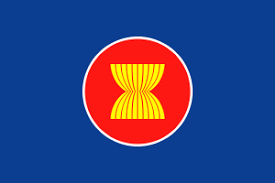
Feedback
Did you find what you were looking for?
Can we ask you a few more questions to help improve the VNTR?
 The ASEAN Trade in Goods Agreement (ATIGA) is one of the basic Agreements of the AEC, signed in February 2009 and took effect on May 17, 2010, formerly known as the Agreement on Preferential Tariffs (CEPT/AFTA) signed in 1992.
The ASEAN Trade in Goods Agreement (ATIGA) is one of the basic Agreements of the AEC, signed in February 2009 and took effect on May 17, 2010, formerly known as the Agreement on Preferential Tariffs (CEPT/AFTA) signed in 1992.
ATIGA is the ASEAN's first comprehensive agreement that governs all intra-regional trade in goods and is built on the basis of a combination of tariff reduction/elimination commitments agreed in CEPT/AFTA along with other ASEAN member states relevant agreements and protocols.
Vietnam joined ASEAN in 1995 and started to implement CEPT/AFTA in 1996 and then continued to implement ATIGA.
Main features of ATIGA:
Principle of commitment: all products in the ASEAN Harmonized Tariff List (AHTN) are included in the tariff commitments of each country in ATIGA, including products that are subject to tariff reductions and products that are not subject to tariff cut or reduction.
The tariff reduction schedule of ASEAN-6 countries (Brunei, Indonesia, Malaysia, Thailand, Philippines, Singapore) is often shorter than the rest - the CLMV group includes Cambodia, Laos, Myanmar, and Vietnam.
For example: For all products on the A reduction schedule (Sch-A) in the Tariff Commitment Schedule:
Most of the products in the tariff schedule will be eliminated or reduced by countries to less than 5%, except for some sensitive products such as: unprocessed agricultural products, sensitive products such as guns. ammunition, explosives, garbage….
Vietnam's commitment
ASEAN Trade in Goods Agreement
Protocol To Amend The Protocol To Provide Special Consideration For Rice And Sugar
ASEAN Trade in Goods Agreement
Annex 1 List of Notifiable Measures
Annex 2 Tariff Schedules
Annex 3 Product Specific Rules
Annex 3 Attachment 1 Product Spesific Rules for Textile
Annex 4 ITA products in AHTN 2007
Annex 5 Principles and Guidelines for Calculating Regional Value Content on the ATIGA
Annex 6 Implementing Guidelines for Partial Cumulation under Article 30(2) on ASEAN Cumulative ROO
Annex 7 CO Form D and its Overleaf Notes
Annex 8 Operational Certification Procedures
Annex 11 List of Superseded Agreements
First Protocol amending ASEAN Trade in Goods Agreement (ATIGA)
Common Effective Preferential Tariff - CEPT (now replaced by ATIGA)
Protocol to Provide Special Consideration for Rice and Sugar, 23 August 2007
Protocol on Notification Procedures, Makati, Philippines, 8 October 1998
ASEAN Framework Agreement on the Facilitation of Goods in Transit, Ha Noi, 16 December 1998
Protocol to Amend the Agreement on ASEAN Preferential Trading Arrangement, Bangkok, 15 December 1995
Framework Agreements on Enhancing ASEAN Economic Cooperation, Singapore, 28 January 1992
Rules of Origin:
Goods can only enjoy preferential tariffs under ATIGA if they originate from the ASEAN region. A good is considered to be of ASEAN origin if:
Procedures for certification of origin:
To enjoy tariff preferences, according to ATIGA, exporters must apply for a Certificate of Origin form D at a competent authority of the exporting country.
There are currently two pilot projects on Self-Certification being implemented by ASEAN countries, whereby eligible exporters will be able to self-certify origin on commercial invoices for exports..
Ministry of Industry and Trade
Disclaimer: All information on this website is presented for consulation purpose only and does not constitute legal advice. All legal responsibility rests solely on the user. Users should not act upon any information obtained through this website without prior verigication with competent national authorities.
The website has been developed under Web Content Accessibility Guidlines (WCAG) 2
Viet Nam Ministry of Industry and Trade. All rights reserved.

Did you find what you were looking for?
Can we ask you a few more questions to help improve the VNTR?

0 of 12 answered


